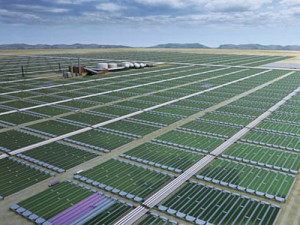If the history of the environment is studied, then 2010 can be regarded as a very poor year for the industries following clean technology. It was really a disappointment when the major nations of the world met at the United Nation’s Global Warming Summit, which was held in Copenhagen in December, failed to a come to a common conclusion as to how the industries can cut down on carbon emissions. But now things have changed. Europe has been investing in clean energy. China has also emerged as one of the leading users of clean technology. Let us look at the top 10 green technology ideas that are set to change the world.
Nature has unfathomable loads of passive energy, lying dormant in unknown territories. If prudently explored, these potential energy hubs can reduce our dependence on fossil fuel energy which is depleting at a rapid pace. At one point eventually “Time” will not give us a choice to rely on oil for energy, it will command us to switch over to renewable sources of energy or even other alternate sources of energy. A brief about a few of the alternate sources of energy is given below.

In a world pinched sharp by rising oil prices and concerns over the impact of emissions on the environment, even the military is chipping in doing its bit to keep the earth safe. They are planning to go green by switching to biofuels, a general term for all fuels derived from plants, biomass, waste oil and fats.
When we are talking about military vehicles it means it is about fuel guzzling beasts that are designed to conquer their elements be it land, air or sea. An absolute no compromise on power is the unwritten rule when it comes to military vehicles and these vehicles run, fly and sail just as well on biofuels. Here are five military vehicles that are powered by biofuels.
US farmers are growing the first corn plants genetically modified for the specific purpose of putting more ethanol in gas tanks rather than producing more food. Aid organisations warn the new GM corn could worsen a global food crisis exposed by the famine in Somalia by diverting more corn into energy production.
The food industry also opposes the new GM product because, although not inedible, it is unsuitable for use in the manufacture of food products that commonly use corn. Farmers growing corn for human consumption are also concerned about cross-contamination. The corn, developed by a branch of the Swiss pesticide firm Syngenta, contains an added gene for an enzyme (amylase) that speeds the breakdown of starches into ethanol. Ethanol plants normally have to add the enzyme to corn when making ethanol.

Biofuels are fuels produced from organic material, as different from fossil fuels such as petroleum or coal. The fossil fuels are non-renewable. In particular, petroleum on which the entire transportation industry is based, is expected to run out within next 30 years. There are stepped up efforts round the world to find alternative energy sources. Biofuels, as a renewable energy source, has made some headway, meeting some 2.7 percent of the global energy usage in 2010. This is projected to rise to 25 percent by the year 2050.
Biofuels can be broadly classified in three categories solid, liquid, and gas. Of these, the liquid form is getting the most attention due to the possibility of substitution for petroleum usage in transport vehicles. The next in important alternative source of energy is the bio gas and then the solid form. The developments in all three forms, holds the promise of biofuels emerging as an alternative energy source, in the coming years.
The UK’s largest coal-fired power station could be turned into one of its biggest sources of renewable energy – if subsidies are increased.
Drax generated about 6% of the UK’s total renewable power in the first half of this year, through burning straw and other biomass at its Yorkshire power station. This was achieved despite burning a much lower proportion of biomass than the plant could sustain if run under optimal conditions.
Dorothy Thompson, chief executive of Drax, said the power station could be transformed to produce more renewable energy than fossil fuel power, using biomass from straw, waste wood and other sources instead of coal.

Ubiquitous and easy to grow, algae has long been a promising biomass-to-fuel candidate in the eyes of researchers. Now algae is a burgeoning sector in biofuels with several high-profile start-ups, including Craig Venter’s Synthetic Genomics, and the interest of big-time investors like Bill Gates and ExxonMobil. Of course, hurdles still exist to make a competitive fuel. Algal biofuels still cost too much to produce—over $8 a gallon (pdf), according to the DOE. Furthermore, most existing strains do not yield oil in the quantities needed to quickly scale up to commercial production of biofuels. Companies also need to worry about contaminating local ecosystems and the amount of water needed to grow cultures in large batches. Despite these challenges inroads—and actual fuel—are being made in the nascent field. Here are 5 projects leading the pack today.
 Follow
Follow